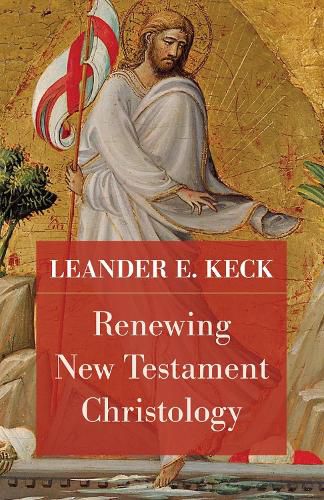Readings Newsletter
Become a Readings Member to make your shopping experience even easier.
Sign in or sign up for free!
You’re not far away from qualifying for FREE standard shipping within Australia
You’ve qualified for FREE standard shipping within Australia
The cart is loading…






Advocating New Testament Christology as a historically informed theological enterprise readily suggests the book's two-part structure: the treatment of the four Christologies in Part Two is warranted by the arguments in Part One, whose first chapter neither surveys nor summarizes the history of research but instead presents a historically informed argument about the impact of "history" on Christology. The second chapter provides a crisp formal statement of Christology's task as the clue to its nature. Christology's logic--its reasoning--is especially important, for it accounts for the way Jesus's religious significance is grounded in his relation to God.
In Part Two, the approach outlined in the second chapter of Part One is applied to two Gospels (Matthew and John) and two Epistles (Romans and Hebrews). These four chapters can be read in any sequence because their order is not part of the argument. Simply juxtaposing these chapters allows each voice to be heard in its own register. Part Two shuns talking of New Testament Christology's "unity" (sometimes a mischievous word) without thereby doubting that the New Testament's diverse Christologies also share certain ways of thinking, expressed in differing words.
$9.00 standard shipping within Australia
FREE standard shipping within Australia for orders over $100.00
Express & International shipping calculated at checkout
Advocating New Testament Christology as a historically informed theological enterprise readily suggests the book's two-part structure: the treatment of the four Christologies in Part Two is warranted by the arguments in Part One, whose first chapter neither surveys nor summarizes the history of research but instead presents a historically informed argument about the impact of "history" on Christology. The second chapter provides a crisp formal statement of Christology's task as the clue to its nature. Christology's logic--its reasoning--is especially important, for it accounts for the way Jesus's religious significance is grounded in his relation to God.
In Part Two, the approach outlined in the second chapter of Part One is applied to two Gospels (Matthew and John) and two Epistles (Romans and Hebrews). These four chapters can be read in any sequence because their order is not part of the argument. Simply juxtaposing these chapters allows each voice to be heard in its own register. Part Two shuns talking of New Testament Christology's "unity" (sometimes a mischievous word) without thereby doubting that the New Testament's diverse Christologies also share certain ways of thinking, expressed in differing words.